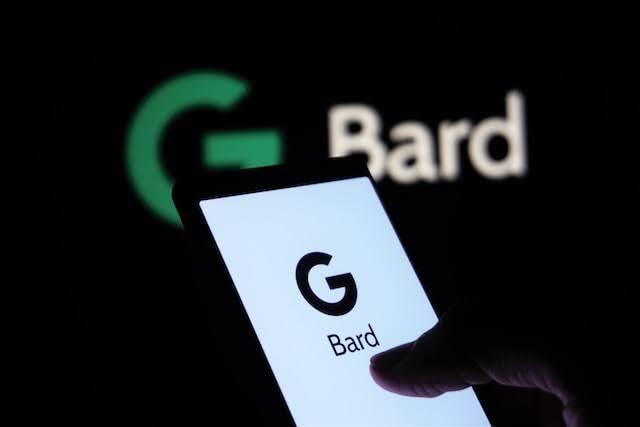
 Data Structure
Data Structure Networking
Networking RDBMS
RDBMS Operating System
Operating System Java
Java MS Excel
MS Excel iOS
iOS HTML
HTML CSS
CSS Android
Android Python
Python C Programming
C Programming C++
C++ C#
C# MongoDB
MongoDB MySQL
MySQL Javascript
Javascript PHP
PHP
- Selected Reading
- UPSC IAS Exams Notes
- Developer's Best Practices
- Questions and Answers
- Effective Resume Writing
- HR Interview Questions
- Computer Glossary
- Who is Who
Google Bard - ChatGPT\'s Rival Explained
Google's current work on artificial intelligence is the most exciting growth. By helping in the earlier detection of diseases and enabling users to access information in their native tongue, AI helps individuals, businesses, and communities realize their full potential. And it creates new possibilities that have a chance to greatly improve the lives of billions of people.
In order to fulfill the purpose of organizing the world's knowledge and making it widely accessible and valuable, Google reoriented the firm around AI six years ago. As a result, it considers AI to be the most significant way we can achieve this mission.
What is Google Bard?

Google Bard is a large language model (LLM) AI-powered chatbot solution that uses machine learning and natural language processing to copy human conversations. Bard can be implemented into websites, messaging services, or applications as an AI chat service to answer questions from users in a realistic, natural language manner in addition to improving Google search.
How does Google Bard work?
Google Bard is based on the late 2022-released Pathways Language Model 2 (PaLM 2) language model.
The Transformer, Google's 2017-released neural network architecture, is the foundation for both PaLM and the model that came before it, the Language Model for Dialogue Applications (LaMDA) technology. The GPT-3 language model used in ChatGPT was built using the Transformer framework, which Google made available as open source.
Bard was created with search in mind, though it still works with Natural Language Processing. It seeks to make it possible for more natural language questions to be accepted as search terms by implementing machine learning. The artificial intelligence (AI) of Google Bard AI is developed using conversations that sound natural. It gives context to the responses rather than just a list of answers. It is additionally designed to help with follow-up inquiries?new search terms.
The first version of Bard used a lighter-model version of LaMDA, which scales to more people using it with less computer power. By using the PaLM language model, Bard is able to respond to user questions in a more visually appealing manner.
When was Google Bard released?
Google began providing users access to Bard on March 21, 2023 and asked them to sign up for a waiting list. Google removed the queue and made Bard available in more than 180 nations and territories on May 10, 2023, making it the unofficial Google Bard release date.
On February 6, 2023, Google's AI chatbot, Bard, was first introduced with no specific release date. Many people thought that Google rushed Bard out before it was ready because of the pressure from ChatGPT's popularity and favorable coverage. For example, it provided an extremely incorrect answer to a question during a live demonstration by Google and Alphabet CEO Sundar Pichai.
Bringing the benefits of AI into our everyday products
For billions of users, Google has a long history of using AI to improve search. One of their initial Transformer models, BERT, was innovative in its ability to understand all aspects of spoken language. MUM, which is 1,000 times more effective than BERT and has next-level and multilingual information understanding, was introduced two years ago.
It can identify key moments in videos and deliver crucial information, including crisis support, in more languages and is 1,000 times stronger than BERT.
These days, Google's most recent AI innovations, such as LaMDA, PaLM, Imagen, and MusicLM, are building on this by developing completely new methods to interact with information, including language, images, video, and audio. Starting with Search, they are working to include these most recent AI developments into our products.
When there is no one correct answer to an issue, AI can be useful in making ideas. Soon, you'll notice AI-powered Search features that compress complex information and multiple viewpoints into easily accessible formats so you can quickly understand the big picture and learn more from the web.
Whether that means looking for additional viewpoints, like blogs from people who play both the piano and the guitar, or going deeper on a related topic, like beginner-friendly starting points. Soon, Google Search will start applying these new AI features.
How to use Google Bard?
Here are the steps on how to use the google bard
Step 1 Just go to bard.google.com to use Google Bard. It will require you to sign in with your Google account, just like all of Google's products do.
Step 2 The terms of service must also be accepted before you can use Google Bard, but once you click through, you can do so quite fast.
Step 3 Similar to ChatGPT, Bard consists primarily of an empty text box with the message "Enter a prompt here." Bard will respond to your question or prompt after you type it.
Fortunately, Google provides a few random startup ideas that are different every time you launch Bard.
Given the following as an example: "What's a quick, healthy vegetarian meal I can make? It needs to be rich in fiber and protein. After that, Bard gave a list of five possible dishes, including a vegetarian stir-fry, lentil soup, and tofu scramble. The dialogue can then go in whatever direction I choose, such as asking for five more dinners or five new recipes for one of the meals.
Limitations of Google Bard
Bard AI, like any AI chatbot, must be trained and educated to provide the right response to false or misleading information, as was clear from its initial demonstration. Since there is constantly new data to learn, AI training is an unending, computationally costly process.
Is Google Bard free?
Google has not yet made any mention of charging for use as of this writing. Despite its success in the cloud market, Google has never charged clients for services. Bard will likely be freely used, according to the current idea that it will be included in Google's default search engine.
Conclusion
Google Bard has many possible uses. The world could change in a variety of ways due to this innovative new technology. To produce reliable findings, the AI model still requires so much more development.

